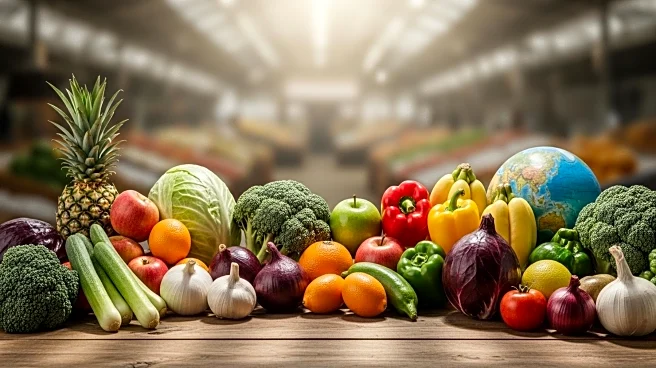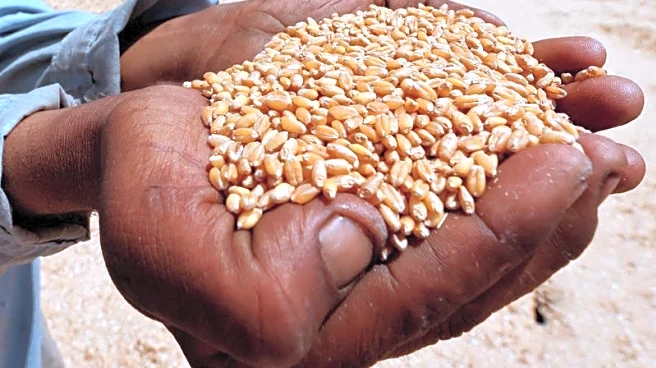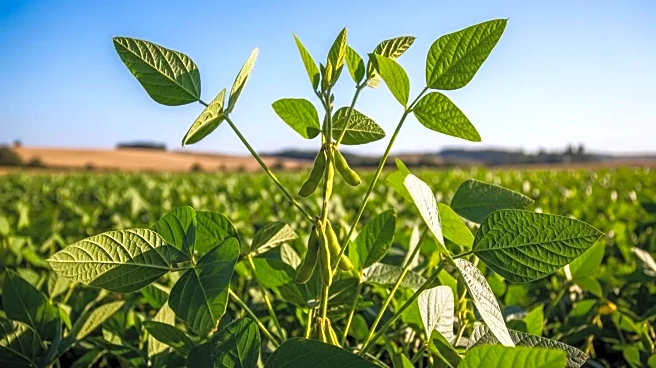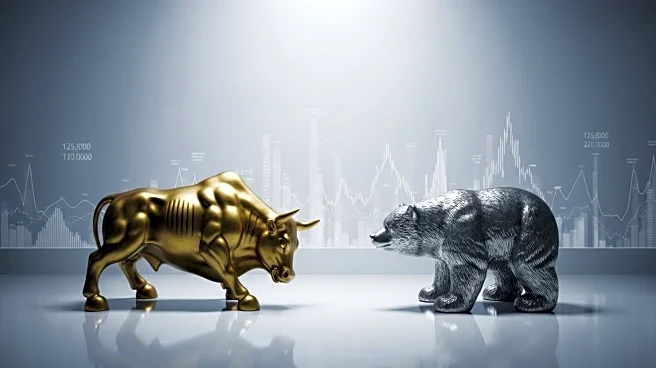What's Happening?
The Food and Agriculture Organization of the United Nations (FAO) has reported a slight decline in the global food commodity prices for September. The FAO Food Price Index, which monitors monthly changes in international prices of a basket of food commodities, averaged 128.8 points in September, down from 129.7 points in August. This represents a 3.4 percent increase from the previous year. The decline was primarily driven by decreases in sugar and dairy price indices. The FAO Cereal Price Index also saw a 0.6 percent drop, influenced by reduced international demand and large harvests in key producing countries. Additionally, the FAO Vegetable Oil Price Index decreased by 0.7 percent, with lower palm and soybean oil prices offsetting increases in sunflower and rapeseed oil prices. Conversely, the FAO Meat Price Index rose by 0.7 percent, reaching a new record high due to increased bovine and ovine meat prices.
Why It's Important?
The slight decline in global food prices is significant as it reflects the complex dynamics of international food markets, which have direct implications for global food security and economic stability. The decrease in cereal and vegetable oil prices could benefit countries reliant on imports, potentially easing inflationary pressures. However, the rise in meat prices, particularly in the United States, highlights ongoing supply challenges and strong demand, which could impact consumer prices and dietary choices. The report also underscores the importance of monitoring agricultural production and trade policies, as these factors can significantly influence global food availability and affordability.
What's Next?
Looking ahead, the FAO has updated its forecasts for global cereal production, predicting a 3.8 percent increase from last year, marking the largest annual growth since 2013. This is expected to lead to higher cereal utilization and stocks, with global cereal trade anticipated to rise by 2.5 percent. These developments suggest a potentially more stable food supply situation in the coming year, although the impact of geopolitical factors and climate conditions on agricultural output remains a concern. Stakeholders in the agriculture sector will likely continue to monitor these trends closely to adapt their strategies accordingly.
Beyond the Headlines
The FAO's report also highlights the broader implications of agricultural production on environmental sustainability. The organization is exploring low-carbon ammonia production for fertilizers, which could play a crucial role in reducing the carbon footprint of agriculture. This aligns with global efforts to address climate change and promote sustainable farming practices. The ongoing dialogue around sustainable agriculture and food security is likely to influence future policy decisions and investment priorities in the sector.











